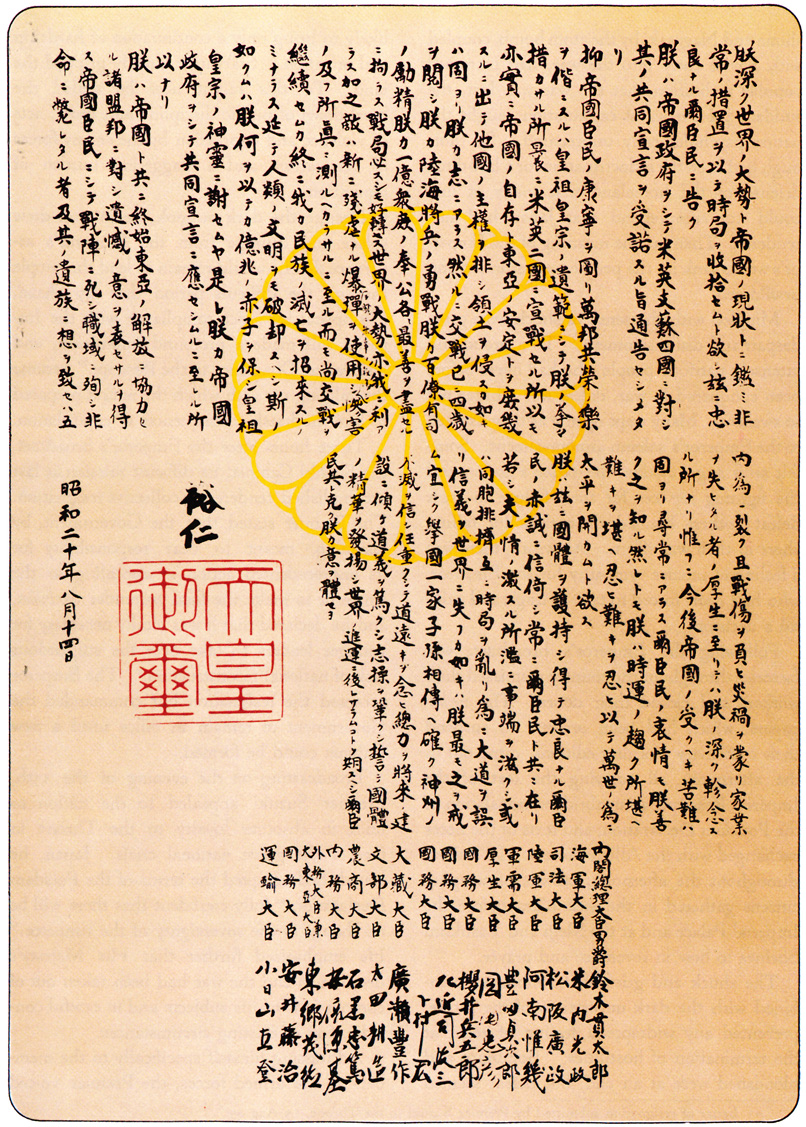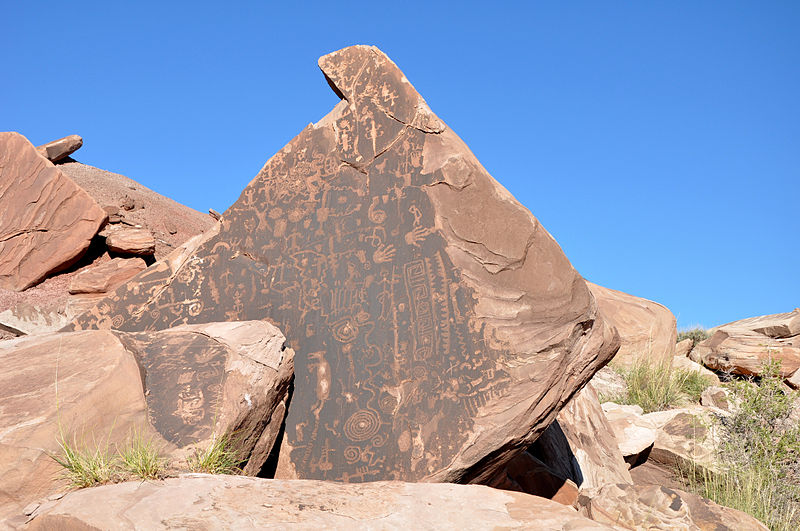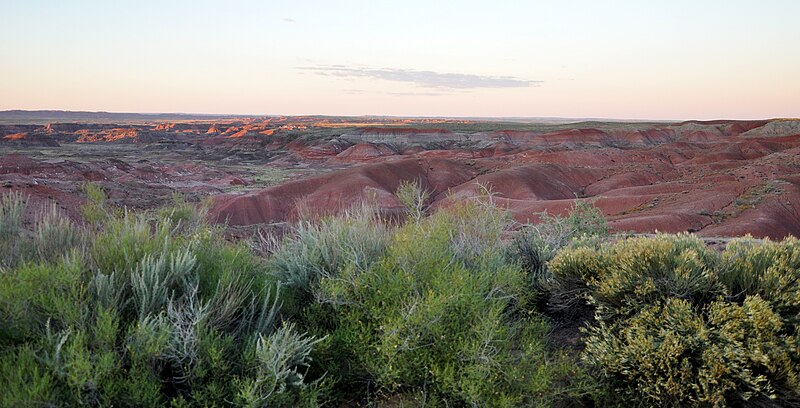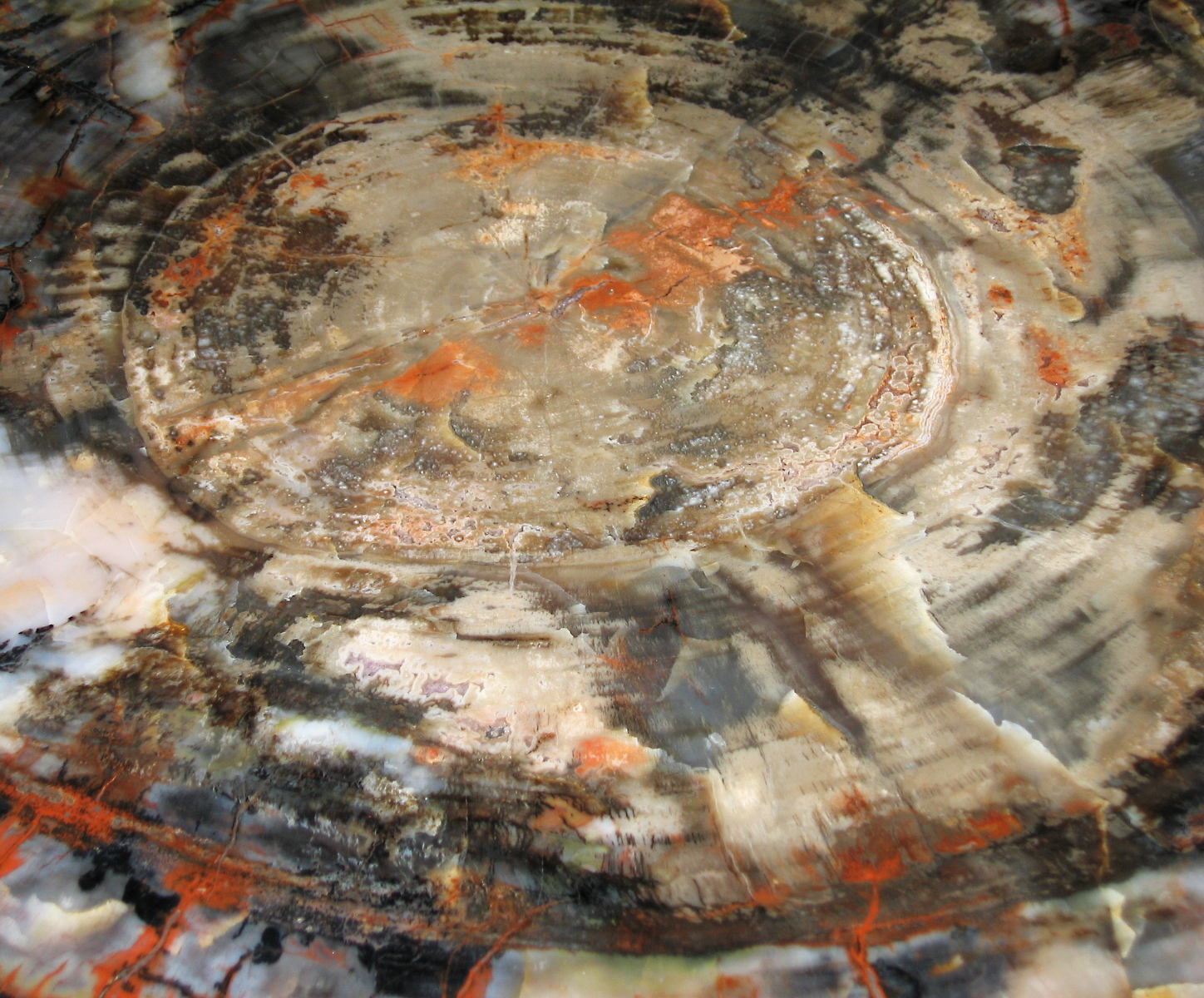. 
Petroglyph (mountain lion), Petrified Forest National Park, Arizona: photo by Petrified Forest Ranger, 14 January 2011 (U.S. National Park Service)
My first experience of the Petrified Forest occurred at the age of four, in 1945, in the back seat of an automobile traveling though the large mysterious darkness of the Midwestern prairie night. The radio drama adapted from Robert Sherwood's 1936 stage play was airing on the Lux Radio Theatre, that night, with Ronald Coleman, Susan Hayward and Lawrence Tierney in the lead roles.
My earliest datable memories all come from this same period. There is the memory of the front page of the Chicago Tribune with a banner headline announcing VJ Day, 15 August 1945. The newspaper had been left upon a small table on the screened-in porch of a house in Twin Lakes, Wisconsin. I was given to understand that this headline meant the war was over. And that this was to be regarded as good news.

Imperial rescript from Japanese Emperor Hirohito ordering Japan's capitulation and end of War II; written 14 August and announced 15 August, 1945: image via U. S. Army Center of Military History
Beneath the headline was a cartoon depiction of a rising sun, setting.

Petroglyph, Petrified Forest National Park, Arizona: photo by Petrified Forest Ranger, 14 January 2011 (U.S. National Park Service)
I think it was around the same time that, curled up in the back seat of my parents' car, I "saw" the Petrified Forest. I had no idea what a petrified forest was. Indeed, as a small unknowing child, the very words terrified me.
The customers of a diner at a remote location in the Arizona desert are taken hostage by a dangerous gangster in flight from the law. The American night bristles with tension and menace. Apart from the sound of the radio broadcast, there is silence in the car. The small boy huddled under a blanket in the back seat is supposed to be sleeping. He is not. The night is a great invisible looming forest. Written upon it in vague watery letters is a story he is not meant to be reading. Captive in it, he is petrified.

Trailer for the film The Petrified Forest (1936): cropped screnshot of main title by Rossrs, 8 June 2007
Six years later, in another car, I rode across the actual Petrified Forest. This time it was not a noirish terror zone of shadows and looming dark clumps of infoliated threat. It had colours, bright sedimentary bands of ochres, ambers, burnt siennas, pinks, bloody reds, blending together across the distancing highway vista into a uniform harsh dried-orange-peel shade, bleached-out by the hard blows of an all-but-blinding desert light. Beyond the visible landscape, within it, and all around it, there was only that brutal midsummer Petrified Forest light.
Written upon it there was nothing.
Except its own indecipherable history, from the ghost-haunted unknown epochs preceding the white Imperial wars.

The Tepees, Petrified Forest National Park, northeastern Arizona : photo by Finetooth, 4 October 2010

Painted Desert badlands as seen from Tawa Point in Petrified Forest National Park, northeastern Arizona: photo by Finetooth, 27 September 2010

Petroglyphs in Petrified Forest National Park, northeastern Arizona: photo by Finetooth, 8 October 2010

Painted Desert badlands as seen from Tiponi Point in Petrified Forest National Park, northeastern Arizona: photo by Finetooth, 26 September 2010

Petrified logs, Petrified Forest National Park, Arizona: photo by Petrified Forest Ranger, 15 January 2008 (U.S. National Park Service)

Cut and polished petrified log, Petrified Forest National Park, Arizona: photo by Laban712, 12 July 2007

Petroglyphs, Petrified Forest National Park, Arizona: photo by Petrified Forest Ranger, 23 August 2011 (U.S. National Park Service)

Petroglyphs, Petrified Forest National Park, Arizona: photo by Petrified Forest Ranger, 23 May 2005 (U.S. National Park Service)

Petroglyphs, Petrified Forest National Park, Arizona: photo by Petrified Forest Ranger, 23 May 2005 (U.S. National Park Service)

Hatch5, Petrified Forest National Park, Arizona: photo by Petrified Forest Ranger, 18 June 2009 (U.S. National Park Service)

Breaks2, Petrified Forest National Park, Arizona: photo by Petrified Forest Ranger, 26 August 2011 (U.S. National Park Service) 
Rim Trail, Petrified Forest National Park, Arizona: photo by Petrified Forest Ranger, 1 May 2006 (U.S. National Park Service)

















































